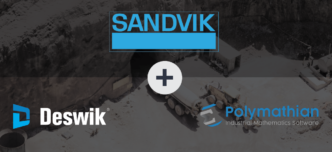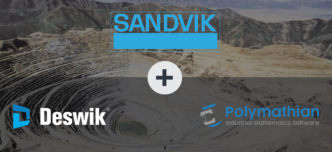Save The UQEM: Enhancing Our Industry Safety Culture
UQEM At A Glance
The University of Queensland Experimental Mine (UQEM) plays an irreplaceable role in the Australian mining industry by bridging the gap between theory and practice at UQ. It is currently under review for closure. Many testimonials have focused quite rightly on the practical benefits to students and the competitive advantage this bestows – having the UQEM as an asset is often a determinant for students in choosing where to study mining engineering and other disciplines.
UQ’s Track Record Of Minerals Industry Safety Research
I want to focus on the critical role the UQEM plays in establishing a positive safety culture, its overall contribution to minerals industry safety, UQ’s reputation and links with industry. For over 15 years UQ has been a leader in minerals industry health and safety education and research. Establishment of the Minerals Industry Safety and Health Centre (MISHC) in 1998 led directly to embedding safety and risk management education in courses at UQ.
Importantly, the MISHC 10 year anniversary report highlights that the success of the MISHC paved the way for formation of the Sustainable Minerals Institute (SMI) in 2001, now recognised as the world’s leading research institute dedicated to finding knowledge-based solutions to the sustainability challenges of the minerals industry. The SMI strengthens links with the minerals industry and is a credit to UQ.
I believe the UQEM has a critical role to play in the modern minerals industry. Mining companies are increasingly looking to automation and simulation in various forms to meet the challenges of sustainable mining. Research aims to develop tools and mining techniques that remove humans from the areas of greatest risk. This is a good thing.
Crucially, most mining today still requires humans to work in hazardous environments at times, and this will be the case for many years to come. Consequently, education and industry must equip mining professionals with fit-for-purpose tools to sustainably build and operate both the mines of today as well as the mines of the future.
Avoiding The Mistakes Of The Recent Past
Recent, painful, unnecessary experience shows us (once again) what happens when key professionals are remote from the hazards that exist in our workplaces. On April 5th 2010, 29 miners lost their lives in the Upper Big Branch mine disaster. It was a cataclysmic failure of basic mine safety practises. One of the key failures was that the responsible people, including engineers, “overlooked the deadly potential of a precarious ventilation system.”
The following quote is from the chapter called “Bring The Air With You”, from the Governor’s Independent Investigation Panel report into the disaster:
“The explosion was the result of failures of basic safety systems identified and codified to protect the lives of miners. The company’s ventilation system did not adequately ventilate the mine. As a result, explosive gases were allowed to build up. Richard Kline, the assistant district manager for MSHA’s Mount Hope office, expressed concern about troubling trends he had witnessed with respect to engineering in the industry as a whole. “I don’t think we have the engineers in these mines that we used to have,” he said. “We’re not engineering mines. They’re trying to use duct tape to fix things instead of engineering. They’re not taking the time to look ahead at what they have.” Testimony from members of Massey’s Route 3
Engineering work force support Sigmon’s and Kline’s characterization of the perception that inadequate engineering was being done by people who had very little experience. Of those interviewed, Heath Lilly said he had very little involvement with the UBB mine; Raymond Brainard said he traveled underground at UBB only once every couple of years; Matthew Walker had never been underground at UBB. Keith Trent and Daniel Snodgrass both said they had no degrees, only on-the-job training. Trent had been underground one time in the previous eight years and Snodgrass hadn’t been underground in two years.
Near Enough Is Not Good Enough
It is vital that professionals who design, build and operate mining assets develop and maintain the ability to recognize and understand ALL hazards in the mining environment, so they can be appropriately managed. Hazard identification underpins the effectiveness of all safety systems, and must be perfect – near enough is not good enough. Unfortunately it is all too easy to be deaf or blind to some hazards in the sterile world of computer screens, plan tables and telemetry monitoring. Alarms can be an annoyance to be cancelled rather than a call to action, and lines on a plot do not always snap into focus with a tick of adrenaline as a hazard is identified.
To complete hazard identification perfectly, professionals must have experienced the workplace, walked the roads, breathed the air, and learnt to process all of the information they can absorb by spending regular, significant periods of time at the face. Building a culture of ‘go and see for yourself’ is a huge part of the value that the UQEM adds to future mining professionals. Telemetry and simulation are great tools, but to be truly effective they need to be reinforced with a mindset that asks, then acts:
- Would I stand there?
- Is there enough air here?
- How will I install this?
- What will others do when they arrive here to start their task?
- How can I get there safely?
- What can I do to make this safe NOW?
Maintaining The Advantage
UQ has the advantage of establishing this positive safety culture from the outset of minerals industry specific education. Combined with the ability to train professionals to both model the theory and verify the reality, this delivers more complete professionals to industry. This is a great thing.
To close the UQEM would be to forfeit these advantages, diminish the quality of professionals entering the minerals industry from UQ, and forgo the positive safety culture that is established when mining professionals learn to ‘go and see for themselves’.
Join Us
The UQEM is a strategic asset to UQ and the Australian minerals industry that cannot be replaced. It must remain open. Please join us in supporting this initiative.
To help, go to the Friends Of The UQEM Linkedin page, and add your voice to this cause.
Neil Tyson
Business Development Manager – Deswik



